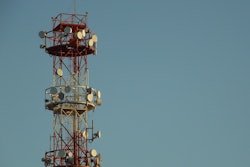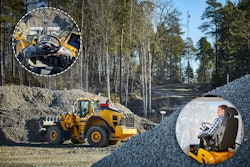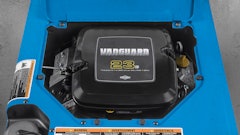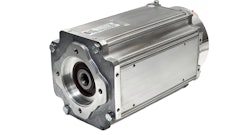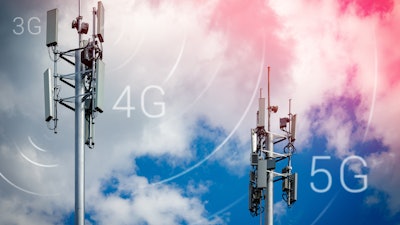
For the heavy construction market, telematics has been a game changer as it enables the consistent tracking and monitoring of both off-road vehicles and assets such as cranes, heavy equipment and lifts. By using IoT devices to monitor GPS location, vehicle speed, engine data and diagnostics, driving behavior, the usage of accessories and other valuable information, telematics provides fleet managers the visibility they need to ensure the safety, efficiency and productivity of their vehicles and equipment.
With the ability to run on cellular communications networks - particularly 3G networks - telematics devices are able to operate even when vehicles and equipment are out on remote worksites, which is a major benefit for the construction industry.
Unfortunately, all major cellular service providers, including AT&T, Verizon, Sprint and T-Mobile, are slated to shut down their legacy networks in 2022. This means that soon 64 million 2G and 3G devices, including the 3G-enabled telematics devices that many businesses have come to count on, will face the sunset.
Sunset, Shortages & Disruptions Impact Industry
While shuttering these legacy networks will enable service providers to re-use existing spectrum so that they can provide additional capacity for 4G and 5G networks capable of providing increased speeds and data connectivity for users, this transition will not come without challenges. Fortunately for some companies, the migration to 4G and 5G is already underway. For others, the closure of 3G cellular infrastructure will leave them unprepared and ultimately disconnected, since 3G-powered equipment, including telematics devices, will cease to function at all.
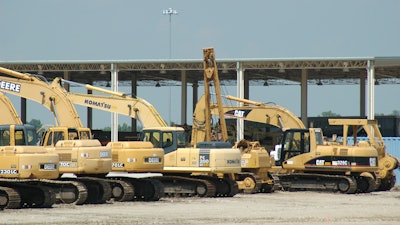 All major cellular service providers are slated to shut down their legacy networks in 2022. This means that soon the 3G-enabled telematics devices that many businesses have come to count on will face the sunset.ACBM staff
All major cellular service providers are slated to shut down their legacy networks in 2022. This means that soon the 3G-enabled telematics devices that many businesses have come to count on will face the sunset.ACBM staff
The 3G shutdown coupled with the semiconductor and supply chain issues should serve as a wake-up call to equipment managers to start migrating their devices today.
Key Considerations for Transitioning Telematics Devices
Upgrading to 4G equipment is easier said than done, since there are several considerations one must take into account before hastily or carelessly switching out old telematic devices.
Generally, functioning equipment generates money for the owner. Replacing operational 3G-capable telematics devices will cause logistical problems each day that a vehicle or piece of equipment is down – costing the owner revenue and reducing productivity. Similarly, the global supply chain crunch has made it difficult to find replacement machinery, straining fleets already at capacity. Replacing telematics devices inside equipment will result in significant stress for most businesses, both large and small.
Smaller companies may find replacing their hardware components to be particularly challenging. Having a sizable amount of 3G-connected equipment could mean losing visibility to machinery in the coming months because of issues related to hardware replacement, including trouble finding downtime for equipment and even connecting with qualified installers to replace or upgrade that equipment.
Larger companies with even bigger fleets may want to invest in a second or even third telematics partner who can integrate their data feeds into software platforms or ingest data from their existing telematics partner. Such an investment would provide a single, streamlined and convenient source for managers to view all their machine-processed data.
 Fleets using 4G telematics will have the edge in data connectivity and transfer speed, meaning that companies will have insights that are closer to real time and far more accurate.istock via Geotab
Fleets using 4G telematics will have the edge in data connectivity and transfer speed, meaning that companies will have insights that are closer to real time and far more accurate.istock via Geotab
Having access to more than one telematics or connectivity provider would enable some of the companies with expansive off-road equipment fleets to better navigate the 3G shutdown and semiconductor shortage.
Don’t Put Off the Transition
With the 3G sunset in full swing, equipment managers – from big and small companies – need to begin coordinating with their telematics partners to upgrade their asset tracking solutions with 4G or 5G devices. Otherwise, users of legacy telematics devices will experience service disruption, downtime and lost revenue, especially in rural areas where the connection is weakest.
In addition, if necessary, equipment managers may also need to consider alternative telematic vendors, since some vendors have not adequately prepared for the 3G sunset, and few providers, if any, were ready for the global chip shortage. As a result, many telematics vendors do not have enough inventory to help their clients transition to 4G. It is important that equipment managers have visibility into their telematics providers’ 4G inventory so that they can make alternative plans if necessary.
Long-term 4G/LTE Benefits
Although the chip shortages and 3G sunset place considerable pressure on businesses, they can look forward to the benefits of 4G/LTE devices. Fleets using 4G telematics will have the edge in data connectivity and transfer speed, meaning that companies will have insights that are closer to real time and far more accurate.
While some fleets will hover in between 3G and 4G devices due to the complexities of transitioning, those who do not convert will experience a decrease in performance. In the end, experts concur that the benefits of upgrading to 4G will far outweigh any short-term disruptions to the bottom line.
Steven Berube is senior business development manager at Geotab.




